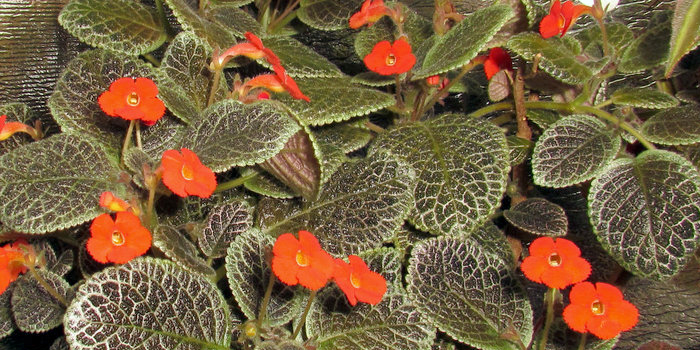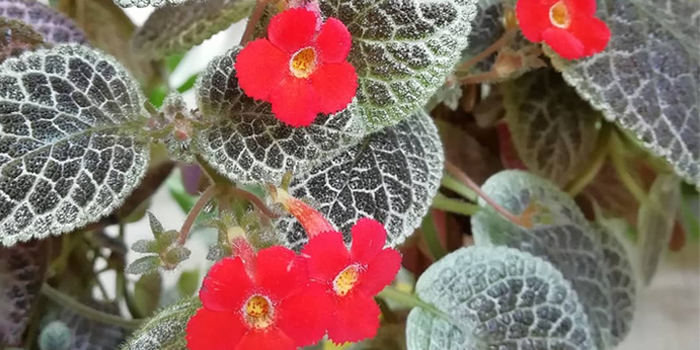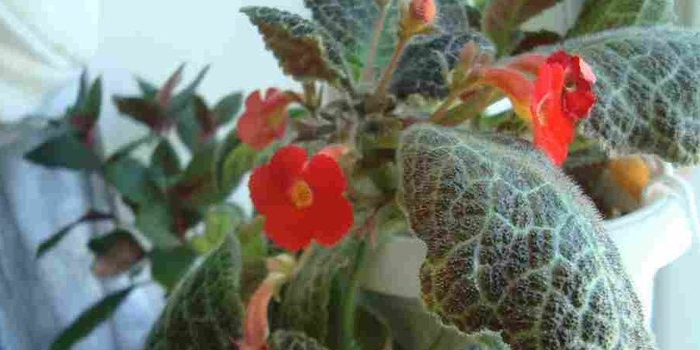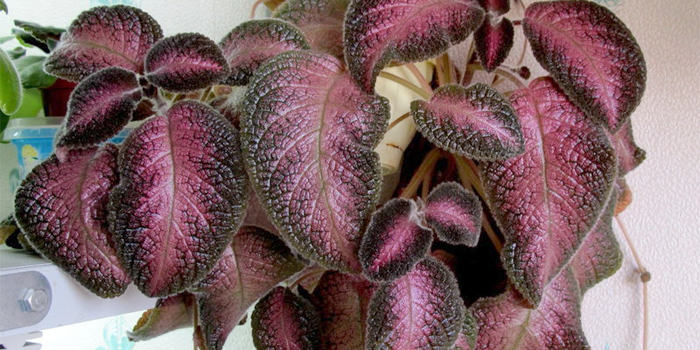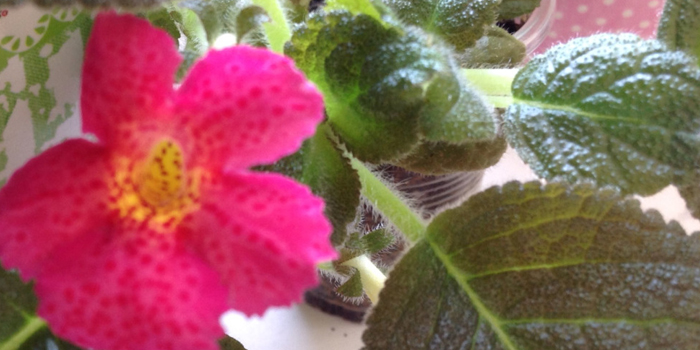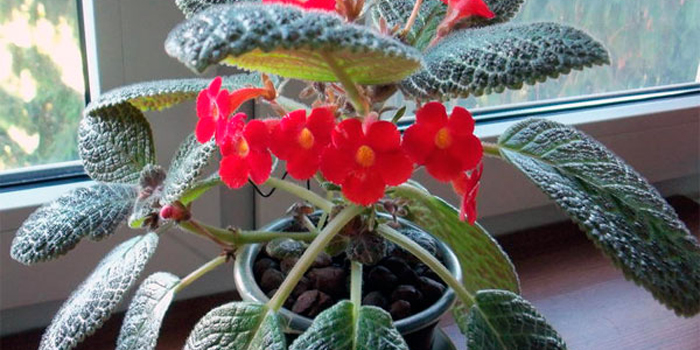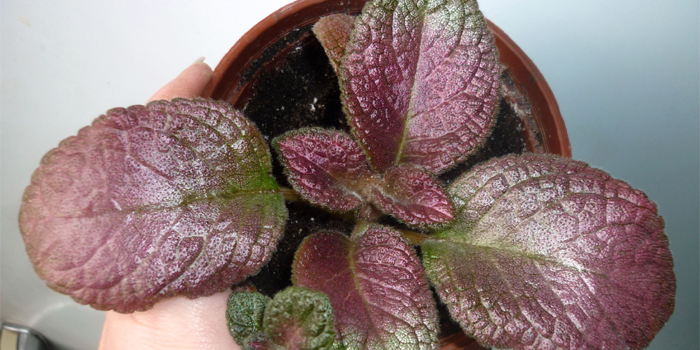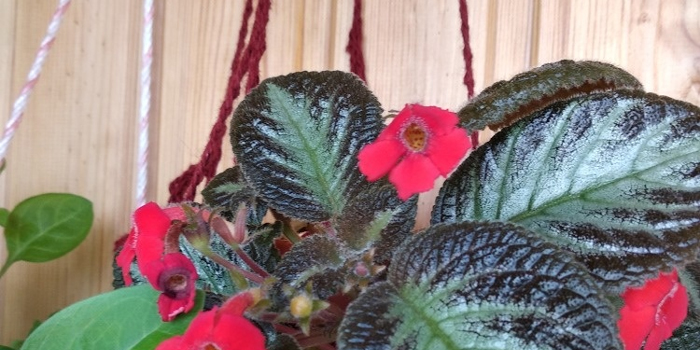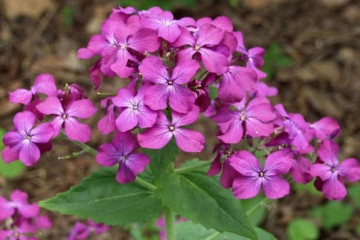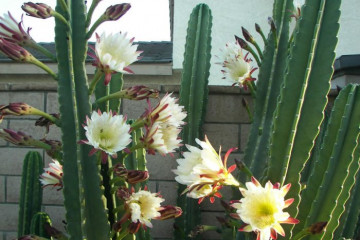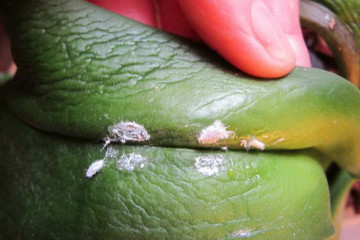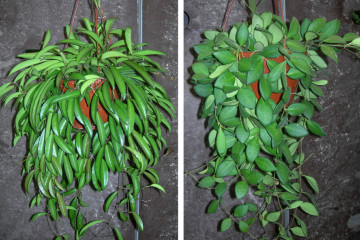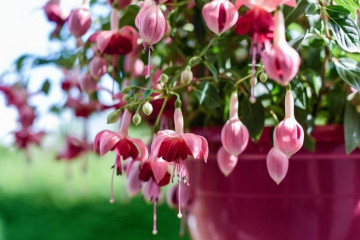Episation flower - types and varieties of indoor plants
Content:
Episia is an exotic flower, belongs to the Gesneriev family. The patterned, velvety foliage of the plant framing the bright flowers has a glowing effect. There is a scientific explanation for the "magic" properties of a sparkling flower. The villi of the leaves unfold the streams of light back to the source. In other words, the light is reflected at the same point from which it came.
The dense foliage gives the plant a special appeal. As the old leaves dry out, many young shoots - babies - already appear at the base of the stem. It turns out that the outlandish foliage constantly frames the episode.
Botanical description
The description refers to ampelous herbaceous perennials with a fibrous root system. The leaves, decorated with characteristic silvery filaments, are oppositely arranged on a shortened creeping stem.
The plant reproduces with whiskers - creeping shoots. The "favorite" soil of the episode is leafy earth, peat and sand, mixed in a ratio of 3: 2: 1.
There are two types of shoots of the episode:
- kurguzny ones with folded opposite leaves;
- graceful, thin, elongated shape with daughter rosettes.
Episode leaves are large, elliptical, sometimes ovoid. The foliage of different plant species can be wrinkled, velvety-pubescent or shiny, olive green, copper-brown or silver in color, veined in a contrasting tone or green with a copper or silver pattern.
Flowers of all types of episode are formed in the axils of the leaves. They are small, tubular, very beautiful, often solitary, and have four stamens. The corollas of the flowers are colored white, red, yellow, golden and pink-lilac.
At home, an episode with bright red flowers takes root well. Perhaps that is why flower growers call the plant a fiery violet. In the wild, the episode blooms in yellow, white and orange. The flowers of the hybrids can be bright orange, lavender blue and light cream.
Distribution area
The homeland of various types of epics is the tropical forests of South and Central America. The plant can be seen in the Antilles, Colombia, Mexico and Brazil, in shaded areas with high humidity.
According to another source, too bright lighting affects the size of the foliage - it turns pale, shrinks, or even stops growing altogether.
Specialist advice
In a room with windows facing north, the inscription can be placed in any part of the window sill. If the window faces east, it will feel good in the right corner of the window sill. When placing the plant on the west window, the grower should make sure that the flower pot is in the left corner.
The sill of a south-facing window is the most unfavorable place.In the absence of an alternative, the epistle should be placed in a wall planter at a safe distance from the window, 2-3 m will be enough.
It must be taken into account that different types of plants are more or less dependent on lighting.
It is believed that the most convenient temperature for an episode is 18-20 ° С at night and 22-27 ° С during the day.
Variety of species
Episode Tiger Stripe grows slowly, adapts well in arid zones and blooms profusely even if it has to exist in a very sparsely lit city apartment.
The flower strongly resembles the Tigrovaya episode, which is widespread in Moscow. You can distinguish one plant from another by the foliage. The leaves of the Tiger Stripe are smaller with silvery veins, and the leaves of the Moscow flower are permeated with veins of a golden hue.
The Northern Light Episode is a hybrid of the Copper Episode. The green foliage of the plant is covered with a silvery bloom and bordered with brown specks. Peduncles of the Northern Lights are colored orange-red.
Emerald Velvet has large, toothed, emerald-pearl-colored foliage, stained with olive brown velvety specks. The Episation Emerald Velvet blooms with delicate lilac flowers with a white core. From a distance, the flowers of the plant appear blue.
A miniature version of the episode, the Silver Skies cultivar, can be recognized by the silvery bloom that appears in some areas of the green leaves of the plant and the bright flowers of a carmine shade.
Episode Luther or Blue Nile is an amazing combination of lavender-blue with a yellow heart of large flowers and fluffy brownish-green foliage. The midrib of each leaf is decorated with a stripe of olive green.
Strawberry Patch, Strawberry Haze - this is the name of the hybrid variety of the episode Strawberry Patch. Small pointed leaves of the plant are colored reddish-pink. During the flowering period, it is covered with scarlet flowers with a yellow center.
Jim Bodnar's Episode Leaves (Jim's Red Trail) are painted in dark brown and dark olive colors. The pubescent, rough foliage of the Red Trail is laced with a red-pink mesh. The flowers of this ornamental plant stand out in orange-red or pure red color with a bright yellow core.
Episcia Silver Sheen is a hybrid of Episcia Cupreata. It blooms orange-red. The foliage of the plant is wrinkled, painted in a silvery-green color and trimmed with a copper-colored edging.
Episode leaves of Strawberry Mist are pale pink in color. In some places, glare of a salad shade appears through the pale pink surface. Episode Stravberry Mist flowers can be red with an orange heart or orange with a red neck.
Episode leaves of Raspberry Blush can be plain, dark green with pale veins or shiny, glossy with light purple veins. It blooms with red flowers with a yellow core. Novice gardeners sometimes confuse this variety with the Pink Panther.
The large foliage of the episode My Precious is a deep green. It is bumpy, glows with a glossy sheen and is decorated with silvery mother-of-pearl veins. The yellow color of the flowers of the plant thickens at the throat.
The flowers of the Sea Foam Episode are orange, and the foliage is very light, large, silvery green with a pink tint in the center and red around the edges. Each leaf is framed with a dark brown edging.
The velvety, dark green foliage of the Aloha Mauna Loa episode with pearlescent veins of bright pink towards the center shines with bright green. The flowers of the plant are red-orange with a yellow center.
The pale green leaves of the Yellow Mist episode are slightly pubescent, covered with a silvery coating along the central vein. During the flowering period, the plant is covered with bright yellow flowers.
Lilacina Viridis is adorned with velvety, fluffy, emerald green foliage, silvery at the center and edged with scalloped fringes at the edges. The flowers of this variety are large, lavender-blue with a yellow neck and serrated, clove-flowered edges.
The coral red flowers of the Episode Ronnie complement the chocolate brown foliage, laced with silvery greenish veins.
Rules for caring for an episode at home
The episode takes root well at home. The plant is usually viable at home for a maximum of three years. It all depends on the conditions in which it grows. When a flower withers, it is easier to replace it than to reanimate it. The freshness and beauty that once left the episode will never return.
Experienced flower growers recommend simultaneously planting many cuttings and children in one vessel so that the planting material covers the entire surface of the soil.
The renewal of an already established and overgrown bush is carried out by amateur gardeners in several ways:
- several cuttings taken from the top of a mature plant are planted in a separate bowl. Apical cuttings root easily and grow very quickly;
- propagated by sprouting leaves. The foliage of all plants belonging to the Gesneriev family takes root quickly. True, in the case of cuttings by leaves, the plant develops much longer than when propagated by apical cuttings. The leaves are rooted by immersing vermiculite or sphagnum in water or in a substrate mixture. Each leaf must be regularly examined in order to prevent the putrefactive process in time.
Sprouted planting material is planted in wide oval or round containers (15-30 cm in diameter). Planting can be done in soil mixture:
- first a layer of sphagnum is laid on the bottom of the vessel, after which layers of soil, charcoal and sphagnum are alternated;
- the surface of the soil is sprinkled with sand.
Dry air is destructive for the episode. Especially affected in arid microclimate varieties, the foliage of which is heavily pubescent. Many gardeners, contrary to this opinion, believe that spraying is unacceptable, since too much moisture, getting on the root system, provokes the onset of putrefactive processes. In fact, Episode loves water procedures, but not as full-fledged bathing, but only for the sake of eliminating dust settling on the leaves and flowers of the plant.
Florists who are fond of breeding episodes fertilize plants of this species either with special fertilizers for the Gesnerievs, or with ordinary manure.
Watering rules
Watering the plant is carried out in such a way that water oozes out of the drainage hole made in the bottom of the flowerpot. The episode is watered after making sure that the soil surface is completely dry after the previous irrigation.
In summer, the recommended frequency of watering is 1 time in 2-4 days. If it is noticed that too much moisture has accumulated in the pallet, the excess is drained, thereby preventing rotting of the root system. At the same time, it is necessary to ensure that the earthen lump is not too dry.
During the winter months, the plant must be protected from drafts, first of all paying attention to the location of the flowerpot. During the heating season, the plant must be removed from the heating devices.
The watering schedule for the episode in winter depends on the room temperature.In the cold season, the flower is watered one to three times a week.
Experienced gardeners urge their inexperienced colleagues to refrain from spraying the episode. Over time, water procedures, of course, will become a habit and become a kind of ritual. But first, a beginner must observe the plant, feel it ... Spraying improperly can result in drying out of the tips of the leaves, stunted growth or other troubles.
This is the only caveat for growing a flower. In general, it is unpretentious in care and does not cause trouble.
